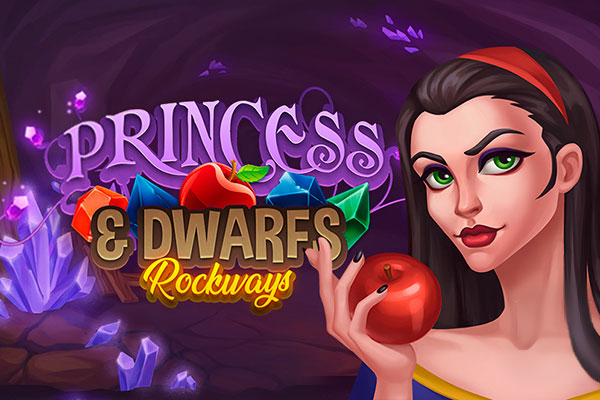Bangla Calendar: Your Comprehensive Guide to the Bengali Year
The Bangla calendar, also known as the Bengali calendar, is a lunisolar calendar used in Bangladesh and parts of India, primarily West Bengal, Assam, and Tripura. It holds immense cultural and historical significance for the Bengali people, dictating festivals, agricultural cycles, and social events. Understanding the intricacies of the Bangla calendar is essential for anyone seeking to connect with Bengali culture and traditions. This comprehensive guide provides a detailed exploration of the Bangla calendar, its origins, structure, key dates, and its continuing relevance in the modern world.
Understanding the Structure of the Bangla Calendar
The Bangla calendar is a lunisolar calendar, meaning it incorporates elements of both lunar and solar calendars. It is based on astronomical observations and calculations related to the movements of the sun and moon.
Months and Seasons: The Bangla year is divided into six seasons, each spanning two months:
- Grishma (গ্রীষ্ম) - Summer: Baishakh (বৈশাখ) & Jaistho (জ্যৈষ্ঠ)
- Barsha (বর্ষা) - Monsoon: Ashar (আষাঢ়) & Srabon (শ্রাবণ)
- Sharad (শরৎ) - Autumn: Bhadro (ভাদ্র) & Ashwin (আশ্বিন)
- Hemanta (হেমন্ত) - Late Autumn/Harvest: Kartik (কার্তিক) & Agrahayan (অগ্রহায়ণ)
- Sheet (শীত) - Winter: Poush (পৌষ) & Magh (মাঘ)
- Basanta (বসন্ত) - Spring: Falgun (ফাল্গুন) & Chaitra (চৈত্র)
Each month has a varying number of days, unlike the Gregorian calendar. The first five months (Baishakh to Bhadro) have 31 days, while the remaining seven months have 30 days. However, in Bangladesh, an adjustment is made every year to align the calendar with the seasons, adding an extra day to Falgun in leap years.
Epoch and Dating: The Bangla calendar era is known as the Bangabda (বঙ্গাব্দ). It is believed to have originated during the reign of the Mughal Emperor Akbar, who sought to unify the lunar Islamic calendar with the solar agricultural cycle for tax collection purposes. The starting point of the Bangabda is 593/594 CE, meaning you add 593 to the Gregorian year to approximate the corresponding Bangla year (until mid-April) and 594 after that.
Key Differences from Gregorian Calendar:
- The Bangla calendar is lunisolar, while the Gregorian calendar is purely solar.
- The Bangla year begins in mid-April, while the Gregorian year begins in January.
- The months in the Bangla calendar have varying lengths, while the months in the Gregorian calendar have mostly fixed lengths.
- The Bangla calendar is closely tied to agricultural cycles and cultural festivals in Bengal.
History and Evolution of the Bangla Calendar
The origins of the Bangla calendar are intertwined with the history of the Bengal region and its rulers. While the exact origin is debated, the most widely accepted theory attributes its creation to Emperor Akbar in the 16th century.
Akbar's Influence: To streamline tax collection, Akbar commissioned the creation of a new calendar that aligned with the agricultural seasons. This calendar, known as the Fasli San, combined elements of the lunar Hijri calendar and the solar calendar prevalent in the region.
Modifications and Standardization: Over time, the Bangla calendar underwent several modifications. In the 20th century, a committee led by Dr. Muhammad Shahidullah in Bangladesh standardized the calendar, fixing the length of the first five months to 31 days. This standardization aimed to reduce discrepancies and ensure consistency in calendar usage.
Regional Variations: Despite standardization efforts, some regional variations persist in the Bangla calendar. In West Bengal, India, a slightly different version of the calendar is followed, with different rules for leap year adjustments.
Key Dates and Festivals in the Bangla Calendar
The Bangla calendar is central to many important festivals and cultural events celebrated by Bengalis worldwide.
Pohela Boishakh (পহেলা বৈশাখ): The first day of the Bangla year, Pohela Boishakh, is a major celebration marked by colorful processions, fairs, traditional music, and delicious food. It symbolizes new beginnings and is a time for families and communities to come together.
Nobanno (নবান্ন): The harvest festival of Nobanno is celebrated in the month of Agrahayan. It marks the reaping of the new rice harvest and is a time for thanksgiving and feasting.
Poush Sankranti (পৌষ সংক্রান্তি): Celebrated on the last day of Poush, Poush Sankranti marks the end of the winter solstice. It is associated with the making and consumption of traditional sweets made from rice flour and molasses.
Durga Puja (দুর্গাপূজা): While the dates of Durga Puja are determined by the Hindu lunar calendar, its celebration is deeply integrated into Bengali culture and often coincides with the autumn season as per the Bangla calendar.
Using the Bangla Calendar in the Digital Age
Despite the prevalence of the Gregorian calendar, the Bangla calendar continues to be widely used in Bangladesh and West Bengal, particularly for cultural and religious purposes.
Online Bangla Calendars: Numerous websites and mobile apps offer Bangla calendar tools, allowing users to easily convert dates between the Bangla and Gregorian calendars. These tools often include information about festivals, holidays, and other important dates.
Bangla Calendar Software: Several software programs and APIs are available for integrating the Bangla calendar into digital applications. These tools are useful for businesses and organizations that need to track dates and events according to the Bangla calendar.
Importance for Cultural Preservation: The continued use of the Bangla calendar is essential for preserving Bengali culture and traditions. By using and promoting the Bangla calendar, we can ensure that it remains relevant for future generations.
Bangla Calendar and Agriculture in India
In India, particularly in West Bengal, the Bangla calendar continues to play a vital role in agriculture. Farmers often rely on the calendar to determine the optimal times for planting, harvesting, and other agricultural activities. The seasonal divisions of the Bangla calendar are closely aligned with the agricultural cycles in the region. For example, the monsoon season (Barsha) is crucial for rice cultivation, while the winter season (Sheet) is suitable for growing vegetables and other crops.
Traditional Knowledge: The Bangla calendar embodies centuries of traditional knowledge about weather patterns, soil conditions, and crop yields. Farmers often pass down this knowledge from generation to generation, using the calendar as a guide for their agricultural practices.
Modern Applications: While traditional knowledge remains important, modern technologies are also being integrated with the Bangla calendar to improve agricultural productivity. For example, weather forecasting services can provide farmers with accurate information about rainfall and temperature, allowing them to make informed decisions about planting and harvesting.
Comparing Bangla Calendar with Other Calendars in India
India is a land of diverse cultures and traditions, and many different calendars are used throughout the country. In addition to the Bangla calendar, other prominent calendars include the Gregorian calendar, the Hindu calendar (Vikram Samvat and Saka Samvat), and the Islamic calendar (Hijri).
Hindu Calendar: The Hindu calendar is a lunisolar calendar used for determining religious festivals and auspicious dates. It has two main variations: Vikram Samvat, which is more prevalent in North India, and Saka Samvat, which is used officially by the Indian government.
Islamic Calendar: The Islamic calendar is a lunar calendar used for determining Islamic religious events. It is based on the cycles of the moon and has 12 lunar months.
Similarities and Differences: While all these calendars serve the purpose of tracking time, they differ in their structure, epoch, and cultural significance. The Bangla calendar, with its lunisolar nature and strong ties to agricultural cycles, holds a unique place in the cultural landscape of Bengal and India.
Bangla Calendar: Auspicious Dates and Their Significance
The Bangla calendar is replete with auspicious dates that hold profound significance in Bengali culture. These dates are often associated with religious ceremonies, festivals, and social events.
Marriage Dates: Families often consult the Bangla calendar to determine auspicious dates for weddings. Certain days and months are considered more favorable for marriage ceremonies than others.
Puja Dates: The dates for various Hindu pujas, such as Durga Puja, Kali Puja, and Lakshmi Puja, are determined based on the Bangla calendar and astrological calculations.
Other Auspicious Occasions: The Bangla calendar also identifies auspicious dates for other important events, such as housewarming ceremonies, thread ceremonies, and starting new businesses.
Consulting a Panjika (almanac) or a knowledgeable priest is customary to ascertain the most propitious dates for specific events.
Conclusion: The Enduring Legacy of the Bangla Calendar
The Bangla calendar is more than just a system of tracking time; it is a cultural artifact that reflects the history, traditions, and values of the Bengali people. Its enduring legacy is evident in its continued use for agricultural practices, religious observances, and social events. As we move forward in the digital age, it is essential to preserve and promote the Bangla calendar, ensuring that it remains a vibrant part of Bengali culture for generations to come. By understanding and appreciating the Bangla calendar, we can gain a deeper understanding of the rich cultural heritage of Bengal and its people. Embrace the Bangla calendar and connect with the traditions that have shaped Bengali identity for centuries.
FAQs about the Bangla Calendar
Q: How does the Bangla calendar differ from the Gregorian calendar?
A: The Bangla calendar is a lunisolar calendar, while the Gregorian calendar is a solar calendar. The Bangla year starts in mid-April, while the Gregorian year starts in January. The months in the Bangla calendar have varying lengths, while the months in the Gregorian calendar have mostly fixed lengths.
Q: What is Pohela Boishakh?
A: Pohela Boishakh is the first day of the Bangla year and is a major celebration in Bangladesh and West Bengal. It is marked by colorful processions, fairs, traditional music, and delicious food.
Q: How is the Bangla calendar used in agriculture?
A: Farmers often rely on the Bangla calendar to determine the optimal times for planting, harvesting, and other agricultural activities. The seasonal divisions of the Bangla calendar are closely aligned with the agricultural cycles in the region.
Q: Where can I find a Bangla calendar online?
A: Numerous websites and mobile apps offer Bangla calendar tools, allowing users to easily convert dates between the Bangla and Gregorian calendars.
Q: What is the significance of auspicious dates in the Bangla calendar?
A: Auspicious dates in the Bangla calendar are often associated with religious ceremonies, festivals, and social events. Families often consult the calendar to determine auspicious dates for weddings, pujas, and other important occasions.
Related Pages
- England Women vs NZ Women: Score Big ₹₹ - India's 1 Prediction!
- DC vs LSG 2025: Who Will Win? Expert Predictions & Odds Inside! 🔥
- Uhmeegle: Get Instant Connections & Bonus - Exclusive India Offer!
- Surana Solar Share Price Today: क्या चल रहा है? [एक्सपर्ट की राय]
- ESIC Full Form Revealed! (2025): Know Your Rights & Benefits!
Slots and Games

{{Games-kaz}}

Wilds of Fortune

Aztec Sun Hold and Win

Shake shake Leprechaun

The Princess & Dwarfs

Aloha King Elvis

Aztec Magic Megaways

Miss Cherry Fruits

Shake Shake Money Tree

Shark Spin